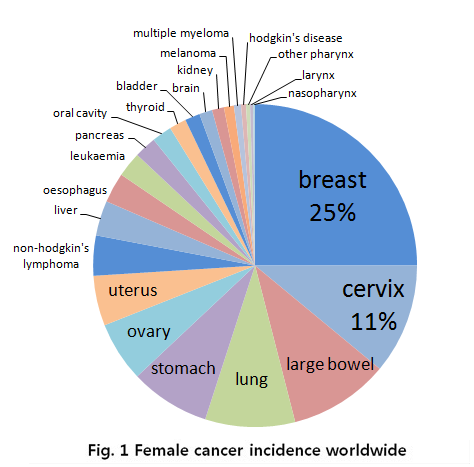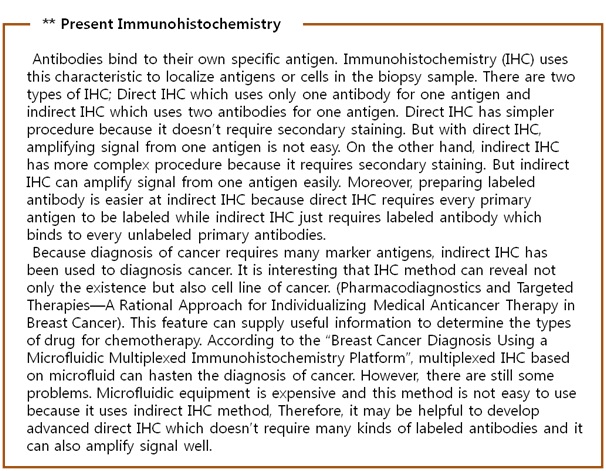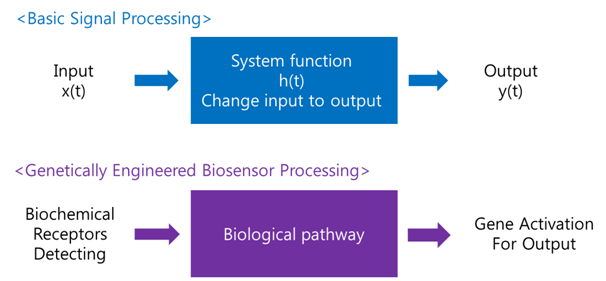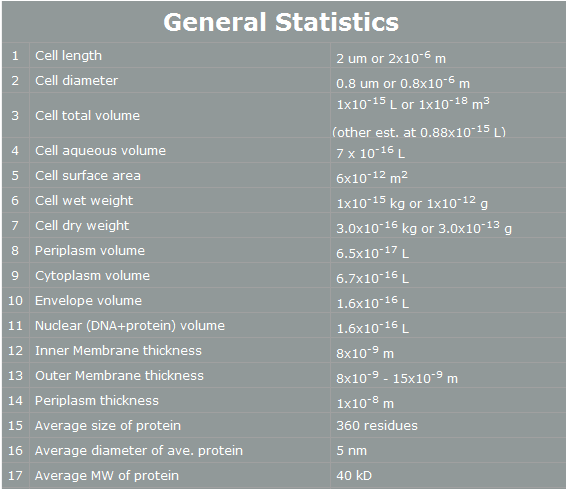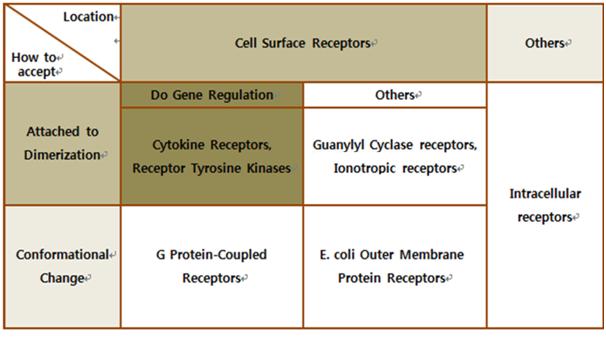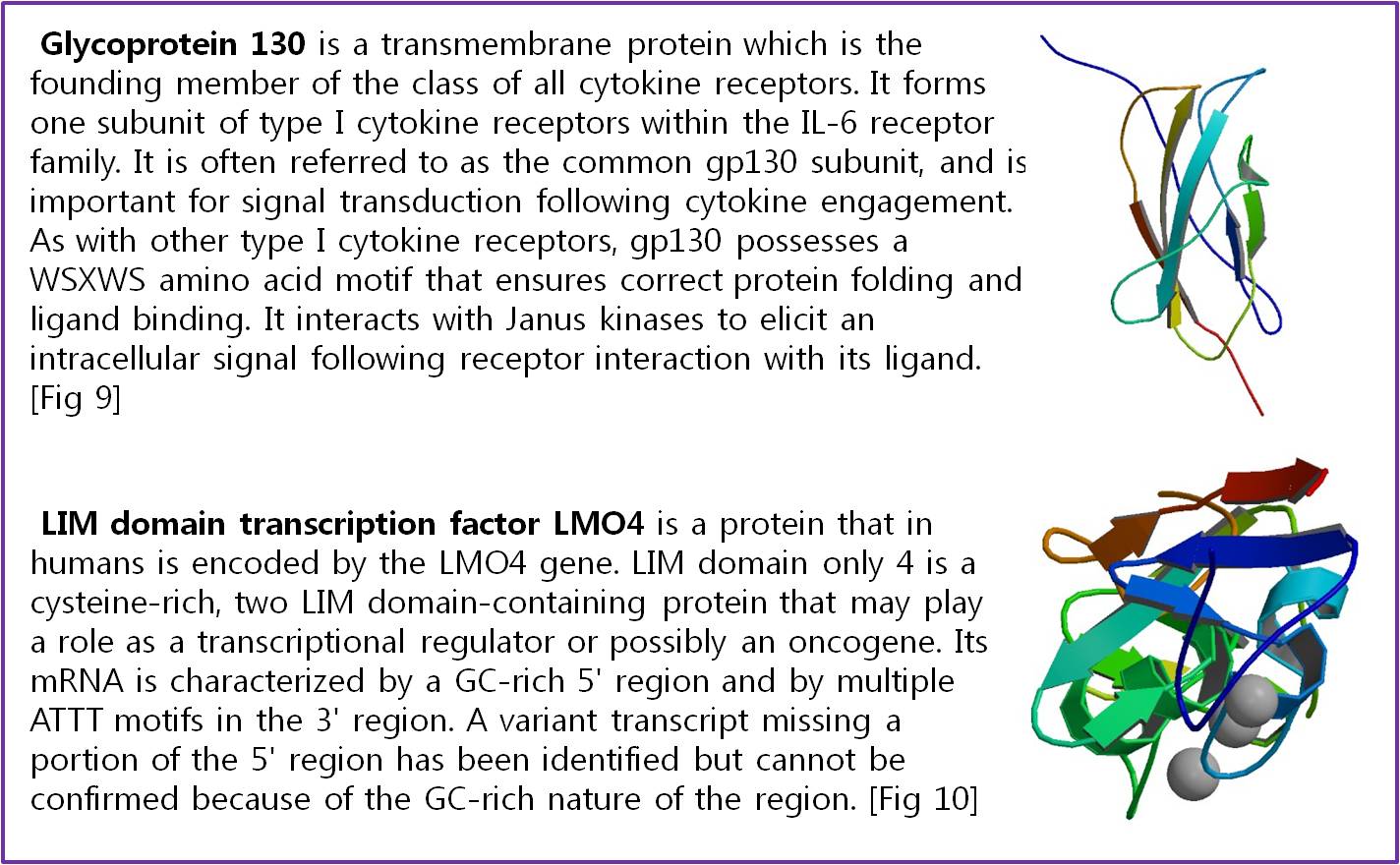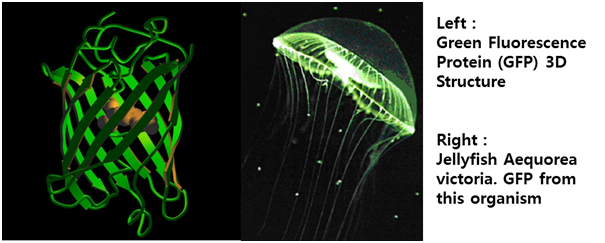Team:KAIST-Korea/Project/Introduction
From 2010.igem.org
(→References) |
(→References) |
||
| Line 137: | Line 137: | ||
:Fig 9. Roberto, Proteína fluorescente verde – história e perspectivas, Química de Produtos Naturais (2009) | :Fig 9. Roberto, Proteína fluorescente verde – história e perspectivas, Química de Produtos Naturais (2009) | ||
<br> | <br> | ||
| - | [1] International Union of Pure and Applied Chemistry. "biosensor". Compendium of Chemical Terminology | + | :[1] International Union of Pure and Applied Chemistry. "biosensor". Compendium of Chemical Terminology :: Internet edition.<br/> |
| - | [2] Garrett, R.H., and Grisham, C.M. Biochemistry, 2nd Edition (2002), pg. 32<br/> | + | :[2] Garrett, R.H., and Grisham, C.M. Biochemistry, 2nd Edition (2002), pg. 32<br/> |
| - | [3] RCSB PDB(protein database), http://www.rcsb.org/<br/> | + | :[3] RCSB PDB(protein database), http://www.rcsb.org/<br/> |
| - | [4] Walker K, Skelton H, Smith K. (2002). accessdate=2009-11-28 "Cutaneous lesions showing giant yeast forms of Blastomyces dermatitidis". Journal of Cutaneous Pathology 29 (10): 616–18. doi:10.1034/j.1600-0560.2002.291009.x<br/> | + | :[4] Walker K, Skelton H, Smith K. (2002). accessdate=2009-11-28 "Cutaneous lesions showing giant yeast forms ::of Blastomyces dermatitidis". Journal of Cutaneous Pathology 29 (10): 616–18. doi:10.1034/j.1600-0560.2002.291009.x<br/> |
| - | [5] Uniprot Database “Interleukin-6 receptor subunit alpha”; http://www.uniprot.org/uniprot/P08887<br/> | + | :[5] Uniprot Database “Interleukin-6 receptor subunit alpha”; http://www.uniprot.org/uniprot/P08887<br/> |
| - | [6] Lichtman, Andrew H.; Abbas, Abul K. Cellular and molecular immunology (5th ed.). (2003). Philadelphia: Saunders. ISBN 0-7216-0008-5.<br/> | + | :[6] Lichtman, Andrew H.; Abbas, Abul K. Cellular and molecular immunology (5th ed.). (2003). Philadelphia ::Saunders. ISBN 0-7216-0008-5.<br/> |
| - | [7] SR Roffler1,6, H-E Wang2,6, H-M Yu2, W-D Chang3,4, C-M Cheng3,4, Y-L Lu5, B-M Chen1 | + | :[7] SR Roffler1,6, H-E Wang2,6, H-M Yu2, W-D Chang3,4, C-M Cheng3,4, Y-L Lu5, B-M Chen1 |
| - | and T-L Cheng3,4. A membrane antibody receptor for noninvasive imaging of gene expression. Gene Therapy. Nature (2005) | + | ::and T-L Cheng3,4. A membrane antibody receptor for noninvasive imaging of gene expression. Gene Therapy. |
| - | [8] Martine I. Darville, Ye-Shih Ho and Decio L. Eizirik, NF-B Is Required for Cytokine-Induced Manganese Superoxide Dismutase Expression in Insulin-Producing Cells, The Endocrine Society(2000)<br/> | + | ::Nature (2005)</br> |
| + | :[8] Martine I. Darville, Ye-Shih Ho and Decio L. Eizirik, NF-B Is Required for Cytokine-Induced Manganese | ||
| + | ::Superoxide Dismutase Expression in Insulin-Producing Cells, The Endocrine Society(2000)<br/> | ||
Revision as of 05:57, 11 July 2010
Why Y.canD? Two fifths of mankind is suffering from cancer during full life-time, and one fourths dies because of this disease. The rate of people who get cancer increases with age. However, human cannot notice easily about getting cancer or not due to incubation period. Doing so is easier when cancer’s diagnosed at an early stage as treatment is often simpler and more likely to be effective. So finding cancer early is very important.
Half of people are killed by cancer within five years after a diagnosis from doctor, and cancer shortens 15~20 years of lifespan of patients. Another interesting research said that 40% of cancer patients experience severe mental distress; most of them are suffered by pusillanimity. It can make one's life tragedy, not only oneself, but also one's family. Another terrible cause why cancer is severe to us is medical expenses. If someone got a cancer, we will receive huge doctor's fee like hundreds of thousands dollar. It makes terribly huge burden for ordinary family. Unfortunately, someone is sometimes suffering to cancer without any treatment.
In the case for women, breast cancer is really severe cancer and the most frequent cancer that can find. The following graph shows that a quarter of women who got a cancer have a breast cancer.
Whole PathwayFlash
Antibodies for Detecting Cancer Cells Cancer cell has distinctive protein expression pattern. This expression pattern also varies on the cell line of cancer cell. For example CD15 and CD30 proteins are OVEREXPRESSED on Hodgkin’s disease, kind of lymphoma, and CEA is over-expressed on adenocarcinoma cell. These protein expression patterns also vary on the cell line of cancer. For example breast cancer cell has different protein expression pattern; over-expression of Estrogen receptor, Progesterone receptor and KI67 of MCF-7 cell line and over-expression of Human Epidermal Growth Factor receptor, KI67 of AU-56 or SK-BR-3 cell line. Therefore, it allows us to know not only the existence of cancer, but also the type of cell line to identify the protein expression pattern of biopsy sample. We selected Estrogen Receptor and HER2 for our project to make a diagnosis the breast cancer. The reason why we selected these proteins is that they are differently over-expressed. Comparing over-expression pattern of these proteins can diagnose existence of cancer and type of cancer.
Making Biosensor – Yeast Cancer DetectorA biosensor is a device for the detection of an analyst that combines a biological component with a physicochemical detector component.[1] In order to make biosensor with genetically engineered organism, we should consider the following basic sensing process. The ‘Receive input’ part can be alternated by represented receptor, the ‘Process’ part can be signaling pathway which changes input to output, and the ‘Extract output’ part can be something easily detectable by human. Nowadays, pigments or fluorescence proteins are usually used for output, and in order to express these substances, gene expression is made constant use in genetically modified organism. Thus, all engineered biosensors with organisms should be modeled on (consist of) 1) biochemical receptors which can activate gene expression, 2) biological pathway, and 3) gene activation for output.
Why Yeast? Why we use ‘Yeast’ instead of ‘E. coli’?
E. coli control is easier than Yeast control. E. coli has faster cell cycle than Yeast. Moreover, there are many E. coli templates. But, although E. coli has many profits, we choose Yeast. Why? The following table is E. coli properties.[2]
Biochemical Receptors
Fusion Antibody Receptors The Fusion Antibody-Receptor is a protein which receptor genetically combines with a specific antibody. The following figures show what the fusion antibody-receptor is for details.
Signal Pathway : JAK-STAT PathwayThere are many signal pathways from plasma membrane receptor to the gene regulation. Figure B is an example of these pathways, MAP kinase pathway linked with RAS pathway. In this pathway,
Because JAK-STAT pathway have only 5 steps while RAS-MAP pathway require 9 steps, we decide to port JAK-STAT pathway to the E. coli.
Gene Activation for Output Inside the nucleus the active STAT dimer binds to cytokine inducible promoter regions of genes containing gamma activated site (GAS) motif and activate transcription of cytokine inducible genes.[5] The STAT protein can be dephosphorylated by nuclear phosphatases which lead to inactivation of STAT and the transcription factor becomes transported out of the nucleus by exporting crm1/RanGTP. Using this pathway, we altered the green fluorescent protein (GFP) gene instead of cytokine inducible genes. So, we could show GFP expression through the previous whole pathway.[Fig. 5]
References
|
Sub-Menu |
 "
"
